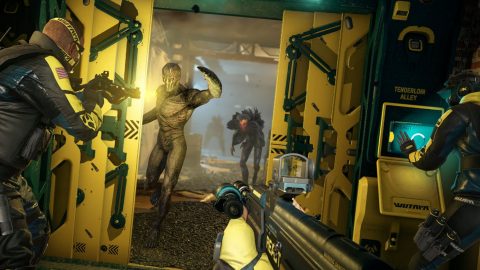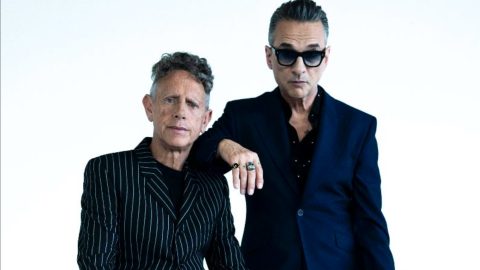
Hey! Listen is a twice-monthly column unearthing obscure video game music and trivia. Today’s column explores the music of Pokémon and Pulseman, and how the game soundtracks influenced Japan’s techno scene.
What’s the first thing you think of when someone mentions Pokémon? Maybe it’s the time you caught your first legendary in the original Red and Blue games – and I bet you remember exactly where you were when it happened – or the torment you had to endure when your entire party was flattened by Whitney’s Miltank for the first time.
Regardless of which Pokémon generation marked your entry into the games, that overwhelming sense of nostalgia you feel when someone mentions Pokémon wouldn’t be the same without the musical touch of Game Freak’s co-founder and long-time series composer, Junichi Masuda. If you’ve grown up with the original games, melodies for the likes of Lavender Town, Pallet Town, or the series’ various battle themes are now permanently hardwired into your brain. I mean, Lavender Town hits so hard that $UICIDEBOY$ built an entire track around it.
But here’s where things get interesting. The music that you know and love as having that quintessentially ‘Pokémon sound’ – the frantic flailing of falling arpeggios, charming counter melodies and Wailord-sized octave leaps – isn’t so much Pokémon music as it is a reflection of Masuda’s compositional style. Pokémon’s musical DNA can be traced back to Masuda’s seminal score for Pulseman, Game Freak’s quirky action platformer for the Sega Mega Drive.
You’ll be forgiven if you haven’t heard of Pulseman. It was first released in Japan and arrived in the US a year later, but only through Sega Channel, Sega’s cable-based and short-lived subscription service that cost $15 per month (and people say PlayStation Plus is expensive!) The game was only made available to the rest of us in Europe when it was re-released through the Wii’s Virtual Shop in 2009.
If you’re wondering how Pulseman plays, it takes the pace and platforming prowess of Mega Man and Sonic The Hedgehog and wraps it up in a Pokémon skin, courtesy of legendary Pokémon artist, Ken Sugimori. If you’re nodding your head because of how great that sounds, that’s because it is. Pulseman is fucking excellent, and it’s a shame that so many people – especially Pokémon fans – aren’t aware of it, especially when it’s got one of the best soundtracks on the Sega Mega Drive.
Junichi Masuda managed to cram 34 tracks into Pulseman – a hilariously unnecessary amount of music for a Sega Mega Drive game – but you’d expect nothing less from a man who could pull together unique melodies for every fight theme in a Steven Seagal film in a single day. And as most Pokémon fans will know, fight themes are Masuda’s bread and better, and you’ll recognise some of the most iconic ones from Pokémon in Pulseman.
The main motifs for ‘Cycle Partition‘ and ‘CL Architecture‘ sound like bad-ass late gym music from Pokémon, and don’t even get me started on ‘Shutdown‘ or ‘Shutdown 2‘, which is basically just the main wild encounter theme from the original Pokémon games.
Ultimately, Pulseman’s soundtrack set the tone for the music in Pokémon that everyone knows and loves today. But there’s another interesting story behind the music in Pulseman: it helped set the foundations for Japan’s thriving techno scene while bringing together techno DJs such as Takkyu Ishino, Dai Sato, Ken Iishi and German DJ, Mijk Van Dijk, who has been sampling video games in his music since 1991, and also contributed music to video games such as Ghost in the Shell, Armored Core 2 and Ridge Racer 5.
You might recognise the name Dai Sato. He’s a famous scriptwriter for well-known video games and anime, but before he was penning scripts for the likes of Cowboy Bebop, Ghost in the Shell, Samurai Champloo and Resident Evil Revelations, Sato worked for Game Freak. He did a lot of writing for gaming and music magazines in his spare time, and his love of electronic music eventually led to him founding the independent techno label Frogman Records in 1993 with his close friend, Kengo Watanabe.
Outside of his work for Frogman Records, Watanabe’s other job was promoting music and video game releases, and he came up with the idea of promoting the recently released Pulseman by creating a techno album of arranged music from the game. It’s one of the hardest-hitting game soundtracks ever released, featuring remixes by big names in the techno scene such as Resistance D, Station Rose, and Takkyu Ishino from Denki Groove. Distribution through the UK exposed Pulseman to new fans and – with the exception of Yoshi on the NES – Junichi Masuda’s music for the first time.
The sounds of Pulseman eventually spread like wildfire through European nightclubs and all-night raves, sampled by big names in the techno scene such as Mijk Van Dijk. This is largely down to Toby Izui, a Japanese techno DJ who Van Dijk calls his ‘brother in raw’. He’s also responsible for bridging the gap between the techno scenes in Japan and Europe through his natural ability to bring people together.
The pair first met in Berlin in 1993, bonding through parties, raves and meals out, before Izui invited Van Dijk to travel to Japan for the first time in 1994 – a major moment in techno history.

“When I toured Japan for the first time in December 1994–January 1995, it was not only a dream come true for me but also a very crucial time in the foundation of the Japanese techno scene which I was lucky enough to witness first-hand,” Van Dijk tells me over email. “I came to know people who shared my taste in music, video games and life in general, and have been very close friends ever since.
“I was invited to play a DJ set at an NYE party at On Air West in Tokyo-Shibuya, which for the first time, had most Japanese DJs perform like my friends Toby, Kengo and Dai alongside International well-known DJs like Ken Ishii, Fumiya Tanaka and Takkyu Ishino, who was a Japanese pop star already with his band Denki Groove and slowly made himself a name as a DJ under the pseudonym ‘Dove Loves Dub’. We all became friends and this was something like a foundation party for the Japanese techno scene.”
On the last night of his tour in Japan, Van Dijk was asked to DJ at a party called Gamer’s Night, where people weaved their way around video game booths as they danced and partied all night. This event, along with the memories from the rest of his Japan tour, inspired Van Dijk’s Tokyo ‘Trax’ EP, which was released in 1995. Armed with a newly purchased hardware arpeggiator and a digital audio tape (DAT) packed full of Pulseman music and samples, Van Dijk gave the Pokémon composer’s compositional style a techno makeover with his track ‘Gamer’s Night’.
“[The samples] naturally found their way into the track, along with the idea to arrange the tune just like a video game walkthrough, with bonus stages, end boss fights and a Game Over message. When Kengo came to visit me in Berlin for Loveparade 1994, I played this to him and he immediately understood the concept without further explanation,” Van Dijk says.
Throughout his career, Van Dijk’s passion for anime, manga and video games has been a major driving force inspiring his music. He spent hours smashing coins into arcade machines to play games such as Bosconian, performed live DJ sets for the PlayStation game, Fluid, and special video game music sets to promote the openings of arcade openings in Shibuya while he was signed to Sony Music’s techno division, Office 7, in Japan, “I was probably known as much as a DJ and producer as well as a fan of games, manga and anime,” he says.
All of this has led to some amazing career highlights, such as being invited to jam out on stage with the prolific house DJ and Ape Escape composer, Soichi Terada at an Onsen Festival in an open bathhouse, a moment which was “super surreal, like a dream from a distant time.”
Given Van Dijk’s pretty much an expert when it comes to the link between video games and techno music, I asked him if he had any recommendations for music that NME readers should check out that combines the two.
“Just recently, I got back into contact with Kohta Takahashi, a former Namco sound staff member who was involved in the soundtrack of Ridge Racer 4 + 5. He just released a wonderful album [‘Reiwa Type 4‘] inspired by his Ridge Racer game soundtracks, which is truly worth a mention. Also, props must go out to Kagami, a Japanese techno producer who sadly left us way too soon in 2010. His album ‘The Broken Sequencer‘ on Frogman Records (1998) always reminded me of the hectic overload atmosphere in Japanese game arcades and pachinko halls. Worth a re-discovery!”
Of course, you also need to listen to the Pulseman soundtrack in full. While there’s no denying the influence that Junichi Masuda’s Pokémon music has had on artists from all over the world, you now know that his music for Pulseman has a prominent place in Japanese techno music history.
If you liked this Hey! Listen article, check out this earlier piece on how an ex-Guns ‘N’ Roses guitarist created the Sega Mega-CD’s most eccentric soundtrack.
The post How ‘Pokemon’ predecessor ‘Pulseman’ bridged the gap between German and Japanese techno appeared first on NME.




